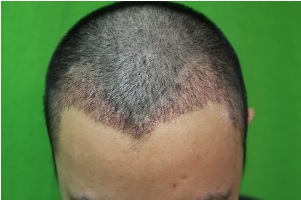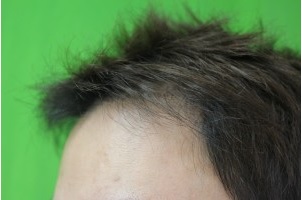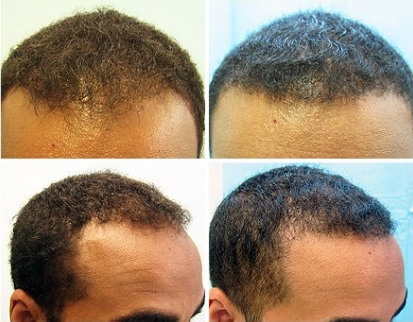Treating ethnic hair loss differs from treating Caucasian hair loss for two main reasons.
- Different ethnic groups face more prevalent causes of hair loss than others, whether genetic or self-imposed.
- The hair follicle varies between people of different ethnic groups.
When treating ethnic hair loss, the two ethnicities that differ the most from Caucasians are those of Asian and African descent.
Hair Loss Differences Between Ethnic Groups – Hair Transplant Grafts For Asian Patient
Asians experience pattern baldness less than Caucasians as a whole, but the condition in the race increasing. The increase of pattern baldness hair loss is unknown in Asians, but some theories include a more Westernized diet.
Their hair follicles differ from Caucasians in that Asians have more dense hair follicles yet fewer hairs per square centimeter. While Asians have the appearance of a greater density, fewer hair follicles need to be taken into account for any type of hair loss transplant. When Asians lose hair, their donor area can be much smaller than that of Caucasians.
In terms of follicular unit extraction (FUE), Asians can opt for more advanced forms to increase their donor their areas. This includes body to head transplant (BHT), where hair is taken from non-head sources such as the beard, chest or leg. Nape or leg hair is may used to restore the hairline. The positive element is consistency of Asian hair. Hair is thick with extremely straight follicles, which is the ideal for FUE.
Another consideration is that people of Asian descent have a greater chance of developing keloids. Keloids typically form with scar tissue during wound healing due to abrasions, surgery and more. During the healing process, too much collagen is produced and results in an overgrowth from the original scar.
Hair Loss Differences Between Ethnic Groups : African Hair Loss Treatment
Though those of African descent experience pattern baldness less than Caucasians, it is still the main cause of hair loss. Traction alopecia is also a major cause of hair loss. This cause is self-inflicted from gradual hair thinning from frequent, forceful pulling. Causes include tight braids, weaves and extensions from styles commonly found by African women.
Another main difference is hair type, which is typically curly or kinked in those of African descent. When hair is curled or kinked, it makes excision of each follicle more difficult and increases transection rates. When transection occurs, the hair follicle is damaged and will not regrow following the transplant.
The care in the extraction process thus requires an expert FUE surgeon. A surgeon who is experienced and precise will be able to excise each follicle successfully and minimalize the chance of damage to each.
Another difference with African patients is the tissue around each hair follicle tends to be tougher than other races. The tissue also typically has a more durable attachment to the hair follicle than other races. Like Asians, they also have a higher tendency to develop keloids post surgery.
Hair Loss Solutions for All Races
Due to the difference among races and how it affects their individual hair loss, a surgeon must understand the nuances. He or she should also be an expert in the field and have experience with hair restoration surgery in numerous races.
Dr. Umar practices an advanced method of FUE hair transplantation, along with body to hair transplant (BHT). He has worked with many different races with superior results and knows how to modify surgery due to the patient. Dr. Umar is also one of the pioneers who perfected the use of motorized devices in FUE and a leading authority in large volume transplantation of non-head hair.



